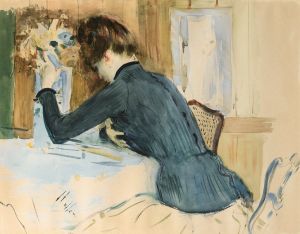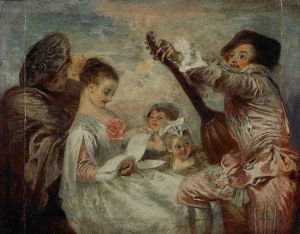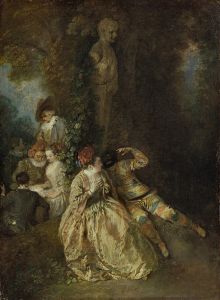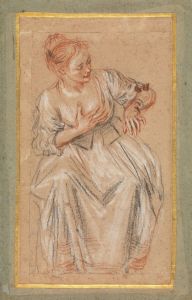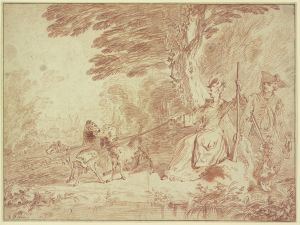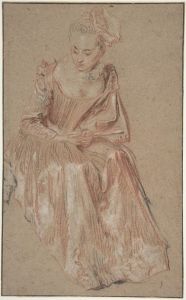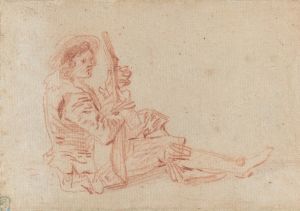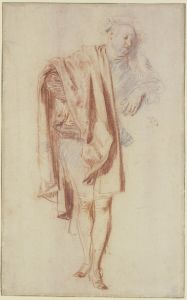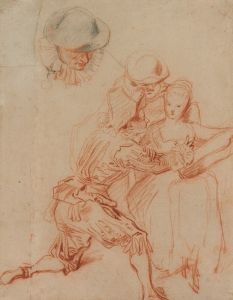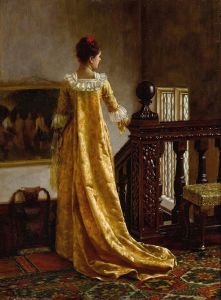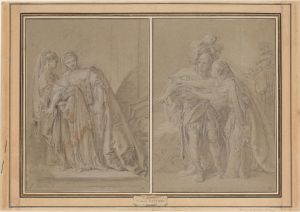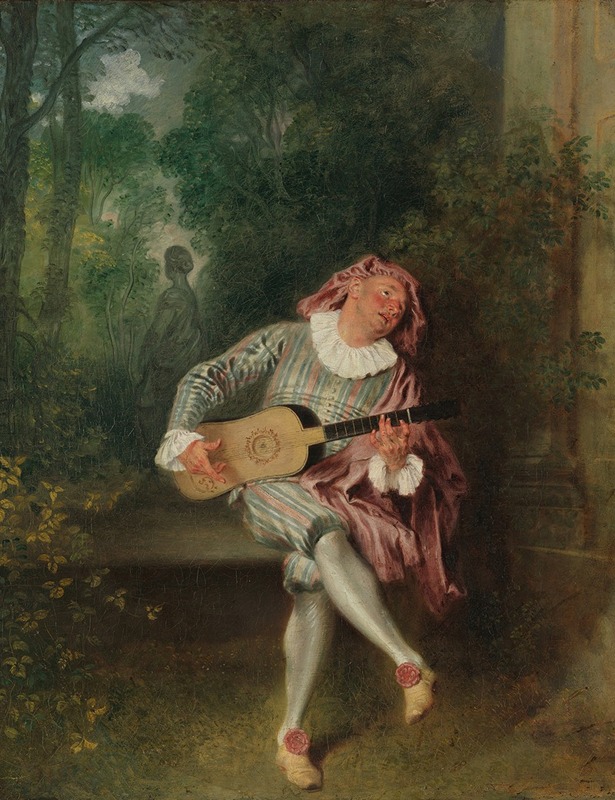
Mezzetin
A hand-painted replica of Jean-Antoine Watteau’s masterpiece Mezzetin, meticulously crafted by professional artists to capture the true essence of the original. Each piece is created with museum-quality canvas and rare mineral pigments, carefully painted by experienced artists with delicate brushstrokes and rich, layered colors to perfectly recreate the texture of the original artwork. Unlike machine-printed reproductions, this hand-painted version brings the painting to life, infused with the artist’s emotions and skill in every stroke. Whether for personal collection or home decoration, it instantly elevates the artistic atmosphere of any space.
Mezzetin is an oil painting by the French Rococo artist Jean-Antoine Watteau, created around 1718–1720. The work is one of Watteau's notable depictions of theatrical and musical themes, reflecting his fascination with the commedia dell'arte, a form of Italian improvised theater that was highly popular in France during the 18th century. The painting is currently housed in the Metropolitan Museum of Art in New York City.
The artwork portrays a single figure, Mezzetin, a stock character from the commedia dell'arte tradition. Mezzetin is depicted as a musician dressed in a colorful, theatrical costume, seated outdoors with a guitar in his hands. His expression is melancholic, and his posture suggests a moment of introspection or unrequited love. The setting includes a lush, natural background, with soft, atmospheric lighting that is characteristic of Watteau's style. The composition combines elements of both intimacy and theatricality, blending the personal emotions of the character with the performative nature of his role.
Watteau's use of color and texture in Mezzetin is particularly striking. The artist employs a delicate palette of pinks, whites, and greens, which enhances the dreamlike quality of the scene. The brushwork is fluid and expressive, capturing the folds of the costume and the subtle play of light on the figure and surroundings. This attention to detail and atmosphere is a hallmark of Watteau's work, contributing to his reputation as one of the leading painters of the Rococo movement.
The painting reflects Watteau's broader interest in themes of love, music, and the ephemeral nature of human emotions. Mezzetin, as a character, often embodies the idea of unfulfilled desire or romantic longing, which aligns with the mood conveyed in the painting. This emotional depth, combined with the technical mastery of the composition, makes Mezzetin a quintessential example of Watteau's artistry.
Jean-Antoine Watteau (1684–1721) was a pivotal figure in the transition from the Baroque to the Rococo style in French art. His works often explore themes of love, leisure, and the theater, and he is best known for his fêtes galantes, scenes of elegant outdoor gatherings. Mezzetin is a smaller, more intimate work compared to some of his larger compositions, but it nonetheless captures the poetic sensibility that defines his oeuvre.
The painting's provenance includes its acquisition by the Metropolitan Museum of Art, where it remains an important part of the museum's European paintings collection. It continues to be celebrated for its beauty, emotional resonance, and the insight it provides into the cultural and artistic milieu of early 18th-century France.





